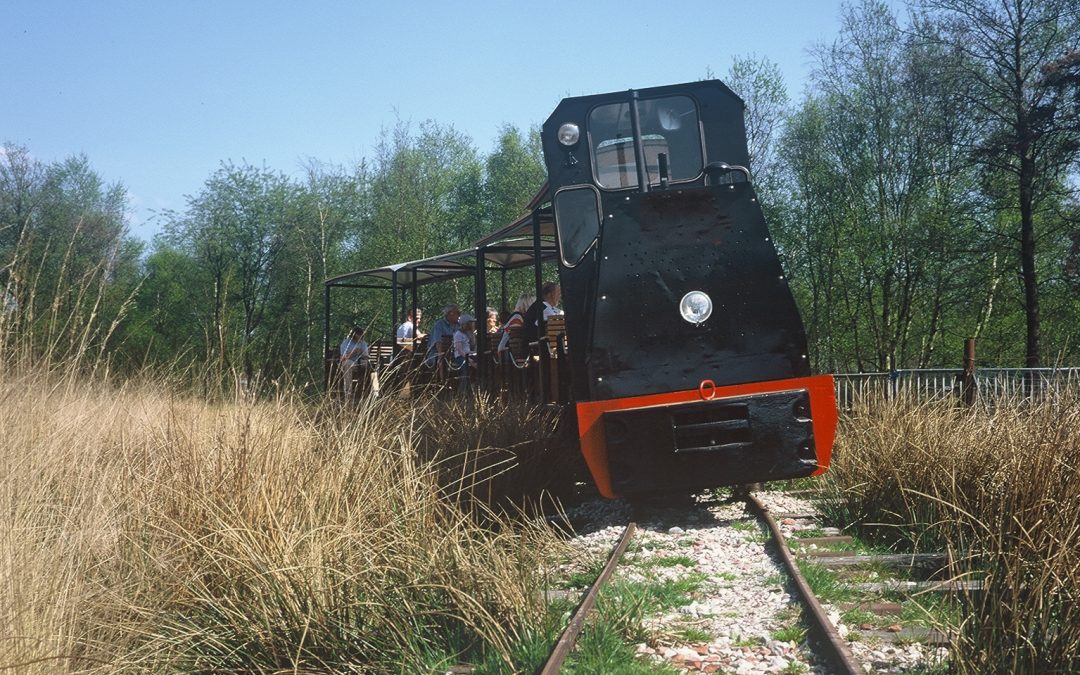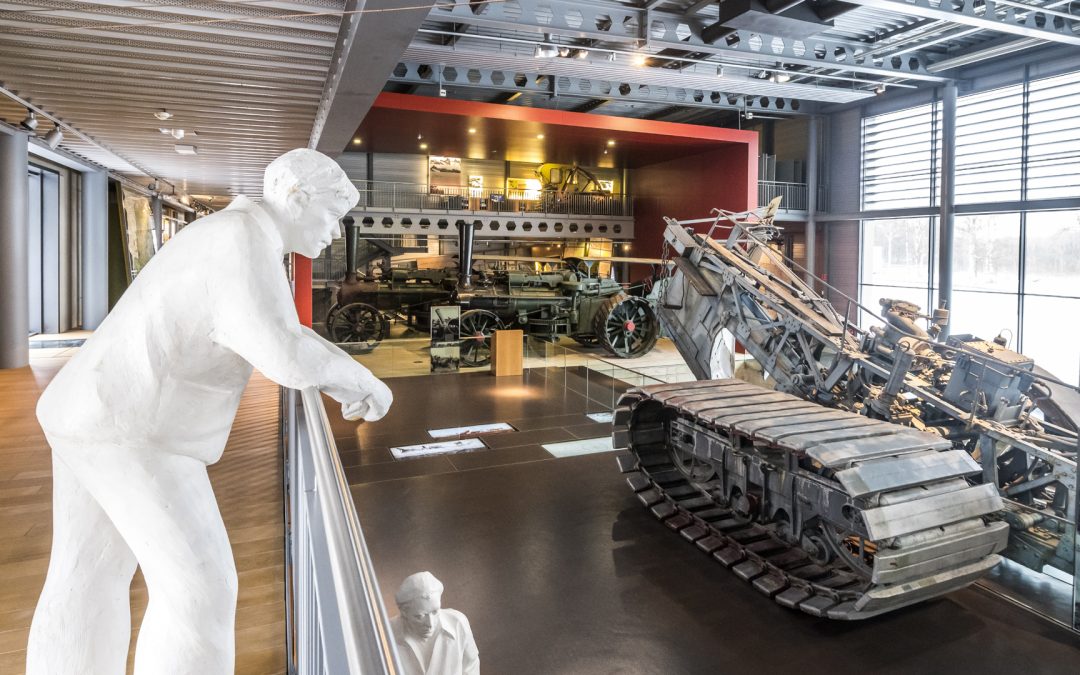
about
The external sites of Emsland Moormuseum in the international Bourtanger Moor-Bargerveen nature park reveal the challenge of maintaining residual peat areas as moorland landscape. The Geestmoor nature reserve (NSG WE 269) is a maintained complex of upland peat areas which was drained and prepared for peat extraction in the 1950s but became a conservation area in the 1980s under new peat moorland protection legislation. The residual moorland area of about 100ha, which is situated in a protected area encompassing a total of 260ha, was rewetted in 2005 and now has the typical characteristics of a seasonally dry upland peat area. Here, we see areas with birch trees and conifers, as well as extensive moor grass areas and seasonally dry to wetland areas with peat moss. Visitors can access the Emsland Moormuseum observation deck by following the Süd-Nord-Str. road for a couple of kilometres and then via a signposted car park along Twister Straße road. The observation deck can also be reached via a footpath after about 4km (a firm step and sturdy footwear required). Information available at the museum ticket office. Platform coordinates: 52°35’07.0″N 7°10’14.6″E. When visiting external Emsland Moormuseum sites, please observe the rules and regulations applicable to nature reserves.

about
The outdoor grounds of Emsland Moormuseum consist of an attractive 30ha landscape with agricultural areas, stretches of woodland, and renaturalized peat uplands. The area is accessible by means of grass tracks, plank paths and a field railway of about 3km in length. In the upland peat area, several information points provide information about the flora and fauna of the peat moorlands, their renaturalization, and the significance of the peat moorlands for the climate. In the vicinity of the entrance hall, you will find the settler’s farm with stables, a farm garden and a breeding centre for domestic animals threatened with extinction. The settler’s farm has been recognized as an ark farm by the “Gesellschaft bedrohter Haustierrassen” (association for endangered domesticated animals). It is home to Landrace of Bentheim sheep, the Bentheim Black Pied pig, the Westphalian chicken (Westfälische Totleger), and Diepholz geese. In the western part of the museum grounds stands a simple, two-story half-timbered house dating from the early 19th century, which was characteristic of the second generation of settlers. A simple “new” farm was built using timber framework from demolished farms in the surrounding area. A buckwheat field, peat ditch and apiary belong with the building. Weather permitting, the field railway runs from early May to late October each year, from Tuesday to Saturday at 11:30am, 2:30pm and 4pm, and on Sundays and public holidays at 11am, 1pm, 2 pm, 3pm and 4 pm.

about
In June 2010 a second exhibition hall was opened in the grounds of Emsland Moormuseum. This hall is barrier-free, and all the floors are accessible by lift. The hall has 1,600m² in exhibition space, is air-conditioned, and proudly displays as centre pieces impressive large-scale exhibits manufactured by the company W. Ottomeyer, consisting of the Mammut steam plough, two traction engines and a crew carrier. The exhibition, which covers several floors, reveals the history of the Emsland Plan, a vast regional development plan of the 1950s and ’60s. In addition, the building’s upper floor will soon be largely devoted to the history of the peat industry since the Second World War and the history of peat moorland conservation and research. The hall also has 400m² for special exhibitions

about
The entrance hall is the first port of call for visitors. It houses the checkout and ticket area, the information point and the shop. The hall was built in 1982, and from 2005 to 2006, the exhibition hall and permanent collection were completely redesigned and modernized, and air conditioning was installed. Particular attention was paid to providing barrier-free access to all the exhibition areas. The exhibition hall comprises the museum library and a cinema accommodating up to 60 visitors, which can also be used for lectures. The permanent collection, which covers 800m², focuses on the colonization of the Emsland peat moorlands in the 18th and 19th centuries, provides information about the living and working conditions of the settlers, describes economic and socio-cultural structures and explains the development of peat extraction until the beginning of industrial peat production in the early 20th century. Apart from history, the ground floor is devoted to peatland flora and fauna.




